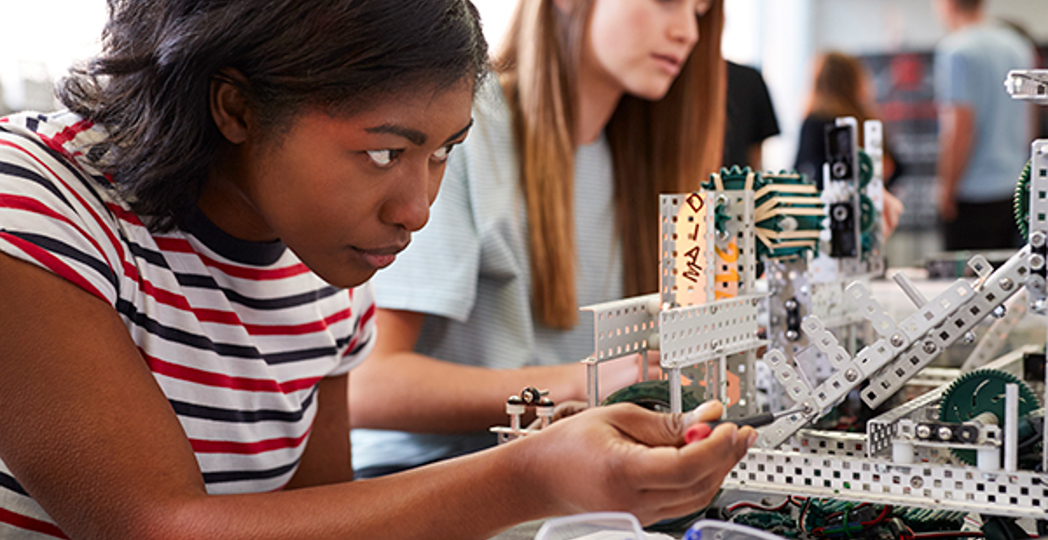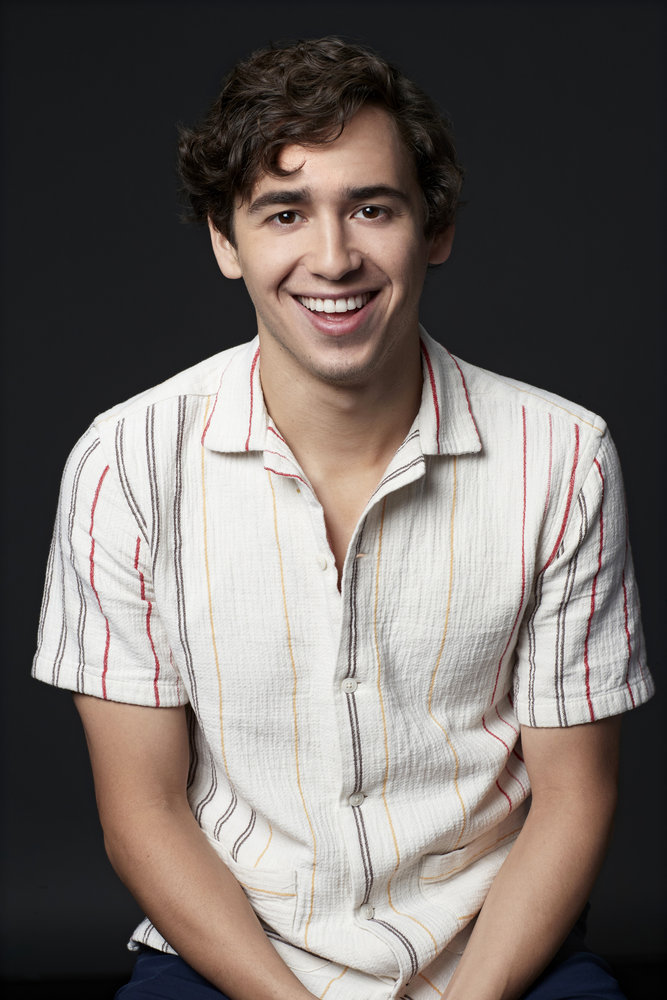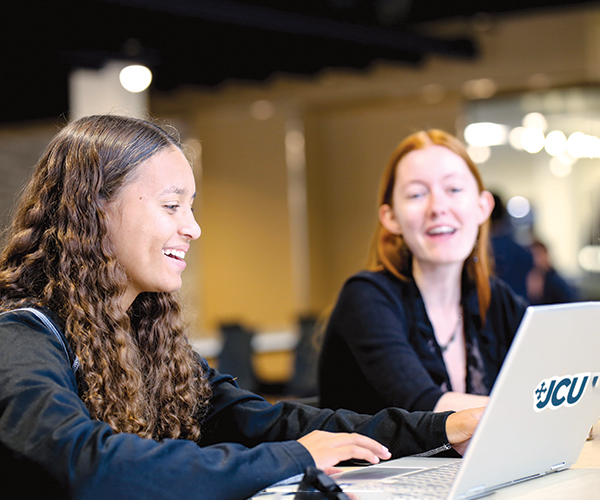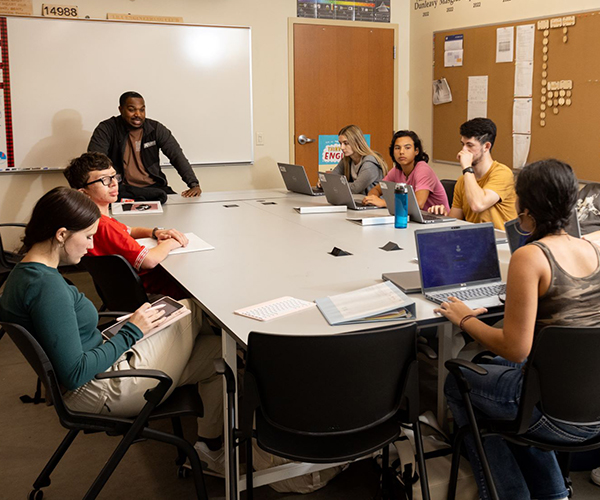Local Schools And Organizations Are Working To Establish A Culture Of Diversity In STEM
by Kristen Hampshire | Aug. 24, 2021 | 12:00 PM

iStock Photo
Danijela Doncevic is no stranger to STEM. In the time since she began attending Hawken School in second grade, she’d regularly been exposed to STEM symposiums through the school’s curriculum.
By the time Doncevic was an upperclassman at Hawken’s Upper School, she dove in completely, signing up for the school’s three-semester, internship-based research program experience where she could pursue an independent project with a mentor.
“Seeing [a lot of] female names on the mentor list inspired me,” says Doncevic.
The time Doncevic spent at Holden Arbortuem’s environmental science lab helping with research as a part of the project opened her eyes to career opportunities she never considered. She stayed connected to the staff throughout high school. She graduated from Hawken this year and will attend St. Louis University in the fall to study biology and Spanish with plans to pursue a degree in medicine.
“Hawken’s STEM program prepares students for real life,” Doncevic says. “[It challenged me to] think outside of the box and try new things in completely different fields that I never thought I would have enjoyed.”
STEM, as defined by the U.S. Department of Education, is the study of any classes relating to the fields of science, technology, engineering, math and computer science. According to a survey by the U.S. Bureau of Labor Statistics, there were nearly 8.6 million STEM jobs in 2015, representing 6.2% of U.S. employment. That said, diversity continues to be a problem throughout STEM fields, as a 2019 survey by the National Science Foundation found that almost 70% of all full-time scientists are white.
While that can’t be changed overnight, a diverse STEM education setting can ultimately result in a more inclusive workforce down the road, says Lisa Hardin, St. Edward High School’s chair of the department of language acquisition. “
“We hope to see a mirror image out in society in the next five to 15 years as we watch these students go into the world,” she says.
At Hawken’s Upper School, 21 of the 37 students in the program are women and 23 identify as nonwhite. Eighty percent of mentors also identify as nonwhite, a 22% increase in diversity from the last two years.
“We think it’s important to increase student interest in STEM careers, and if female students or students of color see more representation, it can pique their interest in pursuing a STEM-related career,” says Hawken’s Upper School’s physics teacher Robert Shurtz.
Diversity in STEM programming goes beyond the racial, cultural and economic backgrounds of those participating, as it also includes exposing students to a range of voices, says Dru McKeown, a design, fabrication and engineering instructor at University School. In the school’s intro to architecture class, for example, McKeown stresses STEM’s history in being dominated by white men.
“It’s our mission to understand what’s going on in the rest of the world that influences this trajectory — to step back and pay attention to it,” McKeown says.
Gaining Perspective
STEM programming is diverse by nature and can inspire conversations that help students understand different perspectives. McKeown points to conversations he had during the pandemic with his students about their frustrations and feelings of isolation.
“Some of the guys would talk about what was going on in the world around them, not knowing what the future would hold and just being generally trapped and cooped up,” he says. “Some students were from a different economic status than others and would share moments of a sense of loneliness.”
At St. Edward, the engineering and language acquisition departments work with the diversity and inclusion coordinator to help students bridge a knowledge or accessibility gap so they can access STEM programs and curriculums.
“We are working to make sure students who might never have seen what STEM is or believe they are not good enough to be an engineer understand that they are and can be,” says John Froelich, the school’s engineering department chair. “[Focusing on diversity] changes how they see the world and how they feel about participating in the world.”
One of University School’s introduction to design courses is based on Stanford University’s design and thinking criteria, which emphasizes problem-solving to meet clients’ or end-users’ needs.
“You have to place yourself in your target user or client’s point of view to figure out what the parameters are for designing something that is successful,” McKeown says.
Doncevic learned first-hand about the importance of communication in STEM fields through her aforementioned internship experience. “I spent a lot of time focusing on reaching out to mentors, learning how to apply for internships and gaining communication skills that have stuck with me and will help me in college,” she says.
That feeling is seconded by Mary Rouse, Cleveland Metroparks’ director of outdoor experiences and education. “STEM learning helps all young people better prepare for the workforce of the future,” says Rouse. “It teaches things like critical thinking, collaboration, use of evidence and problem-solving.”
The Metroparks is doing its part to extend those STEM opportunities to students, as it offers multiple programs that are aligned with STEM school curriculums. One example is the STEM cart at the North Chagrin Nature Center that includes microscopes and magnifying glasses so students can get a close-up view of the species living in the reservation.
“There is a lot of evidence from a workplace development standpoint that when you can increase diversity, businesses run more efficiently, have better staff retention, and tend to be more profitable,” Rouse says.
Restaging Curriculum
Expanding diversity in STEM programming is an active pursuit at Hawken, where Lacy Chick, the lead instructor and co-director of the school’s STEM program, has enhanced the science research curriculum with topics such as bioethics and research ethics by looking at historical exploitation of marginalized communities, diversity — or lack thereof — in STEM fields and retention of diversity in STEM fields.
Overall, the school’s science and math curriculum have evolved to better mirror student diversity, Shurtz says, adding that more young women are attempting post-calculus classes than in the past.
“We often have low-income kids coming into ninth grade taking algebra I who are very bright but had limited opportunities at their previous public or charter school. We encourage them to take summer programming to get them back on the accelerated track,” Shurtz says.
In general biology classes, curriculum was added surrounding the topics of genetics, bioethics, eugenics and conservation. Classes included gender and sex studies, exploitation of underserved and nonwhite communities, colonialism, environmental justice in marginalized communities and accessibility to health care in marginalized communities.
Overall, introducing diverse perspectives into the general STEM curriculum can ignite interest in science, technology, engineering and math courses for students, making studies relatable and interesting. This, coupled with summer or after-school STEM experiences such as internships, help further broaden students’ access to diverse environments.
“One of the biggest takeaways I have from completing my project is the relationships I was able to form with the graduate students and mentors that I worked with,” Doncevic says. “Hawken encourages students to stay connected. I enjoyed my time there so much that I decided to volunteer there [while also trying to] motivate underclassmen who want to do STEM to explore this opportunity.”
Trending
-
1
-
2
-
3
-
4
-
5










